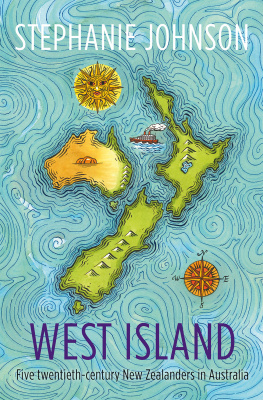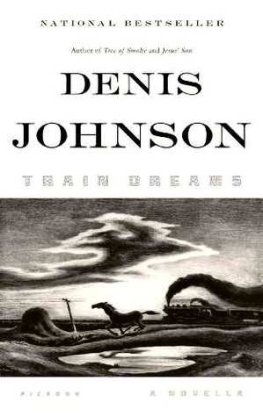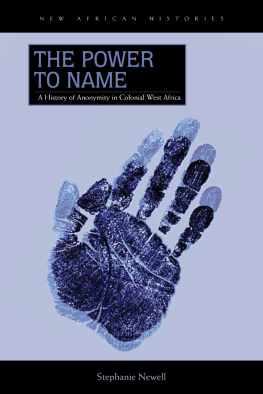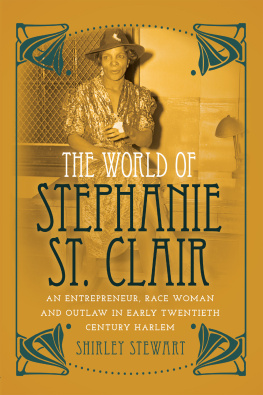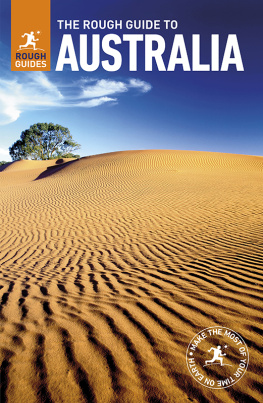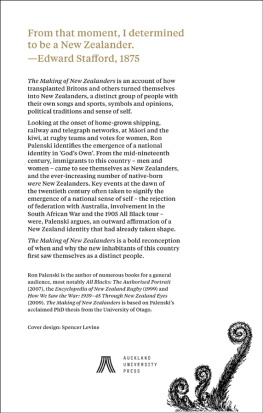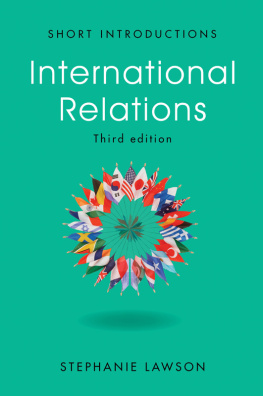Stephanie Johnson - West Island: Five twentieth-century New Zealanders in Australia
Here you can read online Stephanie Johnson - West Island: Five twentieth-century New Zealanders in Australia full text of the book (entire story) in english for free. Download pdf and epub, get meaning, cover and reviews about this ebook. year: 2020, publisher: Otago University Press, genre: Art. Description of the work, (preface) as well as reviews are available. Best literature library LitArk.com created for fans of good reading and offers a wide selection of genres:
Romance novel
Science fiction
Adventure
Detective
Science
History
Home and family
Prose
Art
Politics
Computer
Non-fiction
Religion
Business
Children
Humor
Choose a favorite category and find really read worthwhile books. Enjoy immersion in the world of imagination, feel the emotions of the characters or learn something new for yourself, make an fascinating discovery.
- Book:West Island: Five twentieth-century New Zealanders in Australia
- Author:
- Publisher:Otago University Press
- Genre:
- Year:2020
- Rating:3 / 5
- Favourites:Add to favourites
- Your mark:
- 60
- 1
- 2
- 3
- 4
- 5
West Island: Five twentieth-century New Zealanders in Australia: summary, description and annotation
We offer to read an annotation, description, summary or preface (depends on what the author of the book "West Island: Five twentieth-century New Zealanders in Australia" wrote himself). If you haven't found the necessary information about the book — write in the comments, we will try to find it.
West Island: Five twentieth-century New Zealanders in Australia — read online for free the complete book (whole text) full work
Below is the text of the book, divided by pages. System saving the place of the last page read, allows you to conveniently read the book "West Island: Five twentieth-century New Zealanders in Australia" online for free, without having to search again every time where you left off. Put a bookmark, and you can go to the page where you finished reading at any time.
Font size:
Interval:
Bookmark:



For my Australian family
Published by Otago University Press
Level 1, 398 Cumberland Street
Dunedin, New Zealand
www.otago.ac.nz/press
First published 2019
Copyright Stephanie Johnson
The moral rights of the author have been asserted
ISBN 978-1-98-853157-1 (print)
ISBN 978-1-98-859274-9 (EPUB)
ISBN 978-1-98-859275-6 (Kindle mobi)
ISBN 978-1-98-859276-3 (ePDF)
A catalogue record for this book is available from the National Library of New Zealand. This book is copyright. Except for the purpose of fair review, no part may be stored or transmitted in any form or by any means, electronic or mechanical, including recording or storage in any information retrieval system, without permission in writing from the publishers. No reproduction may be made, whether by photocopying or by any other means, unless a licence has been obtained from the publisher.
Published with the assistance of Creative New Zealand

Editor: Jane Parkin
Index: Diane Lowther
Cover art: Anna Crichton
Author photograph: Annabel Lomas
Ebook conversion 2020 by meBooks
Roland Wakelin
Dulcie Deamer
Douglas Stewart
Jean Devanny
Eric Baume
New Zealanders and Australians
in 1940s Sydney
D ress warmly now, you visitors from the future, because tonight were going out into a Sydney winter of around 70 years ago, pre-climate change, when the world was several degrees colder. The streets are dark because its towards the end of World War II and the city is in blackout. A couple of years ago three Japanese midget submarines entered the harbour and bombarded the port as well as a few houses, taking 21 lives. Afterwards, they scuttled their ships and, in Japanese martial tradition, committed suicide. As if plotting further attacks, the mother subs remained off the coast for weeks, which in Sydney caused real alarm and fear. Children were sent away to safer refuge further west, fathers armed themselves with guns, families moved away. The bodies of the Japanese submariners, when they were recovered from the deep water, were given funerals with full naval honours. People talk disapprovingly about that, not understanding Prime Minister Curtins motives: if he treated the Japanese with respect, it might improve conditions for the many Australian POWs, of whom my husbands grandfather is one.
Curtins respect for the drowned Japanese submariners hasnt worked. The prisoners go on starving to death, the Pacific war goes on with fresh atrocities every day, and even though Sydney has not been attacked again no one is taking any chances.
Watch your step here the paths are icy and a little uneven.
Down Macquarie Street we go, past the tumbledown Hyde Park Barracks, designed by convict architect Francis Greenway. It will be another 40 years before the handsome building is recognised for its unique beauty and an attempt is made to restore it to its original 1817 state. Next door is the Mint Building which, like the barracks, is in poor condition, giving no hint of its history as the New South Wales branch of the Royal Mint, striking millions of pounds worth of coins from the states gold mines. In the 1980s, when Sydney starts to value its nineteenth-century history, this building too will be restored. And here is Sydney Hospital, the oldest hospital in Australasia, with its elegant verdigris-covered cupolae and arched stone porticoes handsome Victoriana to our twenty-first-century eye but despised mid-twentieth century, and striking fear into the hearts of the ailing for its too-recent past of unrelieved pain. The hospitals neighbour Parliament House with its long wrought-iron verandas has also rung with yells and screams, all masculine, but in rage or victory.
Next is the new Mitchell Library wing of the State Library, opened just weeks after the submarine attacks. All is in darkness, but we can climb the grand stone steps and pass between the giant Ionic columns to peer through. There are the three bronze-framed double doors that lead to the glass-ceilinged reading room, and before that the wide marble foyer with its commemorations of explorers and Aboriginal people. This is an era when the building of a new library can comfort and consolidate a city, a state and possibly an entire nation. The Mitchell holds much of the history of Australia, and not a little of New Zealands.
Back we go, down to the street and cross into Hunter Street. Note the absence of skyscrapers and the relative quiet of the night. The monstrous late-80s Chifley Tower in Chifley Square that tower so often miscalled Chiefly by New Zealanders, who not only are more familiar with the concept than are Australians and so misread the word, but also have no reason to remember popular Prime Minister Ben Chifley who will come into office at wars end may not yet even be imagined.
Here turn right at Bligh Street and about halfway along we come to number 19, Strathkyle House Chambers. According to the city records it is an iron-roofed brick building of seven floors and 76 rooms, landlord one S.M. Dempster. In the 1940s it is a substantial building, one of the tallest in this part of town. Most famously, it is the premises of Macquarie Galleries, a private emporium established in 1925 and one which will survive, in various guises, into the twenty-first century.
Inside we go. Already the gallery is crowded with viewers. Keep an eye out for the artist, Roland Wakelin. Hes not a big man and wont stand out from the crowd, but he was the first artist ever to exhibit with Macquarie and has returned frequently ever since to exhibit again. Not all the painters who show here can attract so many punters, but Wakelin is well loved and much respected, not only for his early revolutionary paintings but also for the man he is: solid, dependable, decent, a loving husband and father, a true and loyal friend. Not the usual characteristics for an artist in fact, we could say that some artists born with those traits do their best to dispense with them in order to be taken seriously. By the end of the century the artists narcissistic temperament will be desired by many, and not all of them artists. Wakelin is not bothered with any of that nonsense. He is, as it happens, by birth and nature, a New Zealander
Whats that? How can he be by nature a New Zealander? Hes not Mori, is he? And even then, how may we attribute certain characteristics to a racial group without risking racism?
Lets not quibble about that now we have plenty of time to discuss national characteristics later. They do exist, though acknowledgement of them has fallen from favour.
Observe how newcomers respond to the crowded room. Some have come for the party and so ignore the art, looking around immediately for people they know, or have heard of, or would like to meet. Others go straight to the pictures, as we do.
The closest painting is The Artists Wife and Daughter Reading, 1938, oil on board. It tells us much about Wakelin, how he values domestic peace. He portrays the mother and daughter in warm colours, orange and red, with an earthy wall behind them. The open book and magazine or newspaper are deep cream. There is no visible clock but its almost as though we can hear it, slowly ticking away the hours of an afternoon spent with his family. And a little further on, another tribute to lifes simple pleasures, valued by many during wartime. This is Sunday Walk from around 1939, also oil on board, with a car and the street disappearing into the infinite distance. There are stairs up to a block of flats, and terrace houses on the other side of the street. It is a late-afternoon urban landscape, with a man and a woman arm in arm crossing the street. Imbued in the scene is a sense of anticipation for the coming evening. The couple are on their way home, or on their way to visit friends or family. Despite its dark, wintry hues, the painting is comforting, almost cosy.
Next pageFont size:
Interval:
Bookmark:
Similar books «West Island: Five twentieth-century New Zealanders in Australia»
Look at similar books to West Island: Five twentieth-century New Zealanders in Australia. We have selected literature similar in name and meaning in the hope of providing readers with more options to find new, interesting, not yet read works.
Discussion, reviews of the book West Island: Five twentieth-century New Zealanders in Australia and just readers' own opinions. Leave your comments, write what you think about the work, its meaning or the main characters. Specify what exactly you liked and what you didn't like, and why you think so.

